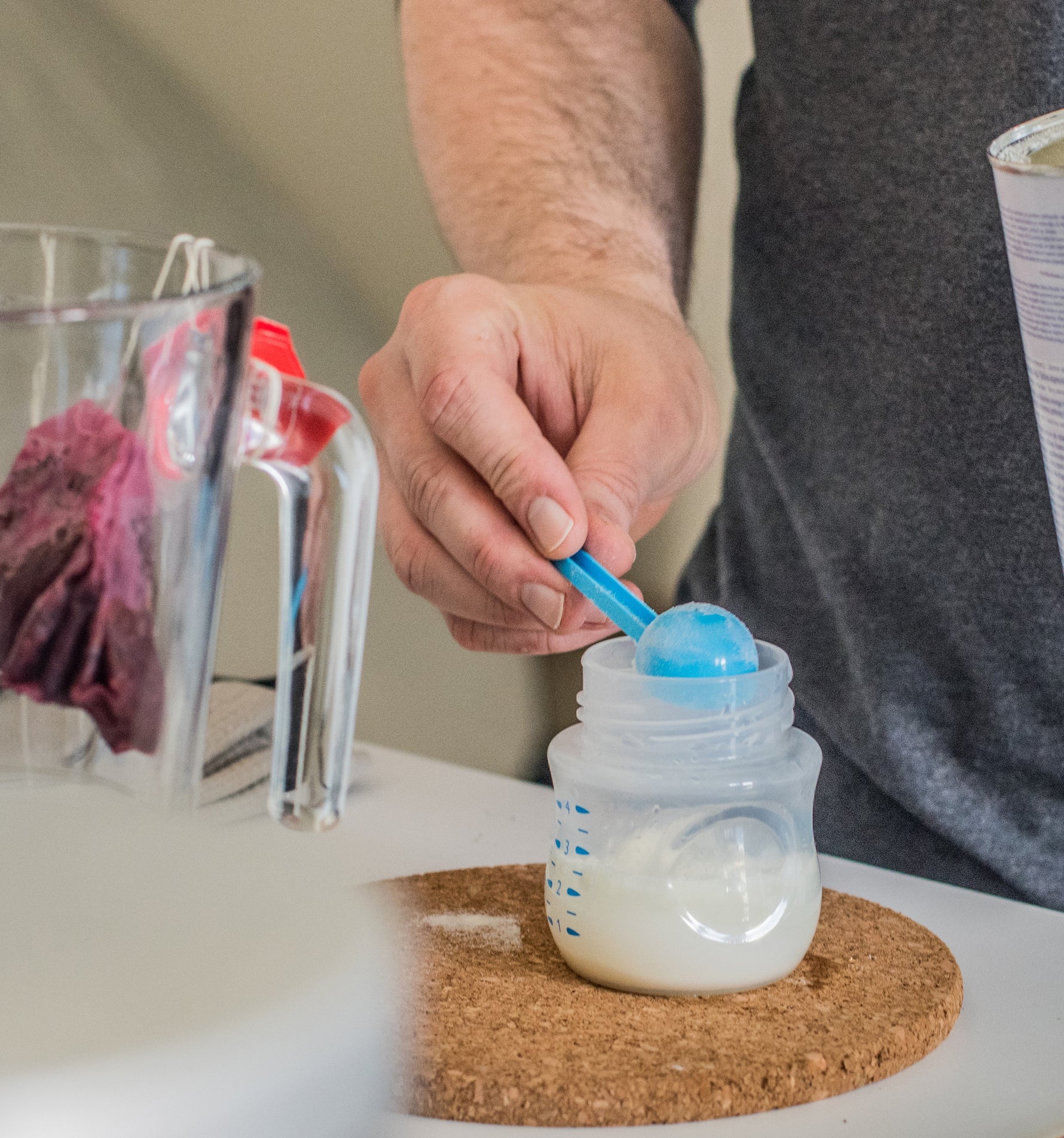Health Canada recommends that, for the nutrition, immunologic protection, growth, and development of infants and toddlers, you breastfeed exclusively for the first six months and you sustain it for up to two years or longer with appropriate complementary feeding.1,2
If you need help breastfeeding, healthcare professionals, family and friends can often provide support, encouragement and advice during this period of learning to feed your new baby.
There are a variety of reasons you may choose to supplement breast milk with formula, like: Baby isn’t gaining weight as quickly as your doctors would expect, mom’s milk is taking time to come in, or on rare occasions, you’ve been advised by your doctor to avoid providing breast milk in order to protect your baby due to health concerns.
Here’s some information about your formula choices to help determine what’s best for you and your baby.
The facts
Unlike regular cow’s milk, infant formulas contain the recommended amounts of protein, carbohydrate, fat, vitamins and minerals required for baby’s healthy growth & development.
Healthcare professionals recommend cow’s milk-based, commercial iron-fortified formula for infants who aren’t exclusively breastfed because it offers a complete source of nutrition for your baby during the first year.1,*
All infant formulas in Canada meet strict nutritional standards, but not all formulas are the same.
100% whey, partially hydrolyzed protein is a type of cow’s milk protein that has been partially broken down into smaller pieces.
Hospitals don’t carry all infant formula brands.
Look for a formula with the benefits of probiotics, 2’-FL, and DHA
There have been many scientific advancements to infant formulas—consider choosing a formula that contains:
ProbioticB. lactis: Probiotics are part of what gives breast milk its natural protective qualities. Probiotic B. lactis contributes to baby’s healthy gut microbiota and supports their developing immune system.2
Probiotic L. reuteri: Probiotic L. reuteri contributes to baby’s healthy gut microbiota and helps to reduce fussiness3,4and mild spit-ups.5,+
2’-FL HMO: HMO are bioactive compounds found in breast milk that offer protective benefits for your baby. HMO support your little one’s digestive health and developing immune system. One of the most abundant types of HMO in breast milk is called 2’-FL.6-8
DHA: DHA contributes to your baby’s normal physical brain and eye development.
Formats
Infant formula comes in three different formats and you can choose one, two or all three for your baby—whatever your daily routine can handle!
Ready-to-Feed Formula
New to formula? This easy-to-use format was made for your convenience.
Comes in a ready-to-use sterile nurser form (Attach nipple. Warm**. Feed!)
Do not mix with additional water.§
Concentrate Formula
"Add Water" concentrated liquid infant formula is easy to use and prepare for added convenience
Requires additional amount of sterilized water§
Mixes easily (No clumps or scoops!)
Powder Formula
Convenient
Great value!
Requires powder be added to desired amount of sterilized water§
Introducing Infant Formula: Step-by-Step
Follow these simple instructions to supplement breastfeeding with formula or transition to formula feeding:
Substitute one mid-day breastfeeding with a bottle-feeding. Relieve your breasts between feedings by expressing small amounts of milk (only if necessary).
Talk soothingly when you offer the bottle and give extra loving attention.
Substitute another breastfeeding with bottle-feeding every 2-3 days until you reach your desired balance between breastfeeding and bottle-feeding.
Some Additional Thoughts on Transitioning
Do not replace two consecutive feedings on the same day when you first begin weaning.
If you continue with breastfeeding in the morning and evening, or leave them as your last substitutions, you will have greater flexibility to return to work or share daytime feedings with others.
The transition to formula may happen smoothly, but sometimes it takes a little longer.
All babies and moms are different, so try to be patient, relax and enjoy your time together.
* All breastfed and partially breastfed infants in Canada should receive a daily vitamin D supplement of 10ug (400 IU).
+In breastfed babies.
**Do not use a microwave oven to warm formula, as it can produce hot spots in the bottle that can burn your baby.
§ Your baby’s health depends on carefully following the label directions for preparation and use.
References
1 Joint statement of Health Canada, Canadian Paediatric Society, Dietitians of Canada, and Breastfeeding Committee for Canada. Nutrition for Healthy Term Infants: Recommendations from Birth to Six Months. 2012. Nutrition for Healthy Term Infants: Recommendations from Birth to Six Months - Canada.ca
2Holscher H, et al. JPEN. 2013;36(1):106S-116S.
3Chau K, et al. J Pediatr. 2015;166(1):74-78.
4Czerkies L, et al. J Pediatr Health Nutr. 2019;1(1):19-26.
5Garofoli F, et al. Int J Food Sci Nutr. 2014;65(5):646-648.
6Bode L, et al. Glycobiology. 2012;22(2):1147-1162.
7Goehring K, et al. PLoS One. 2016;146(12):2559-2566.
8Storm H, et al. Global Pediatric Health. 2019;6:1-10.












